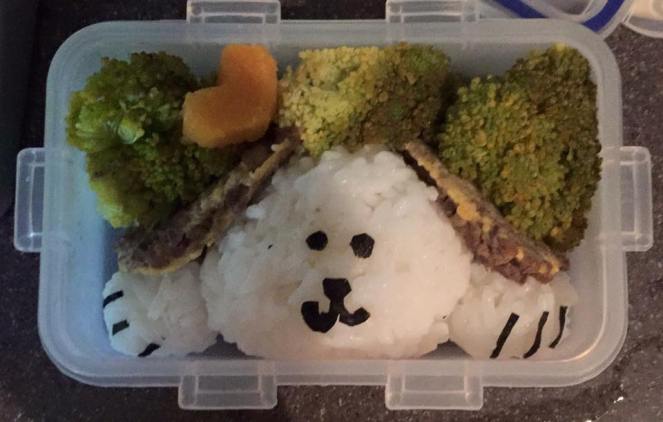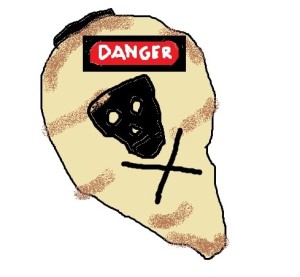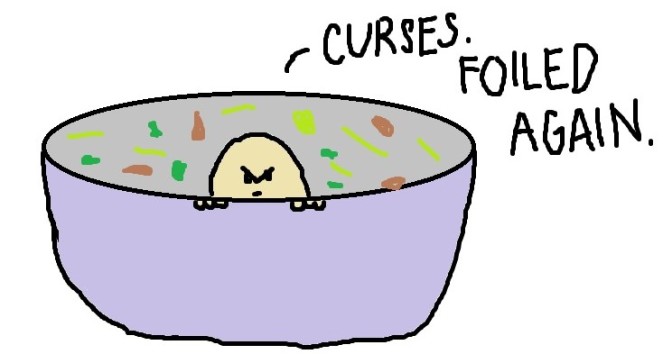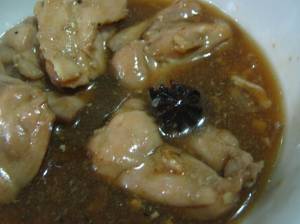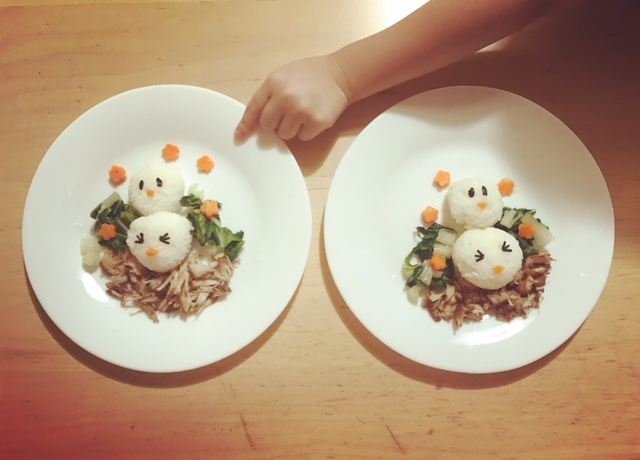
What is it about kids that they are programmed to be picky eaters? My daughter dislikes egg yolks, milk, chicken, and carrots. My son dislikes everything except doughnuts and ramen.
One trick that I use to make them eat better is the Do As I Say rule. Usually, this involves telling them the story of how the Pharaoh was cursed by God with 10 plagues because he kept on disobeying.
But, I want the kids to have pleasant memories of mealtimes. They should have a positive relationship with food. Not associate it with rivers of blood.
So I make these little bento lunches. It’s cute so they’re interested. My daughter makes up a whole scenario where the faces are going to a party inside her tummy. My son roars like a dinosaur sometimes; other times he makes up dialogue like, “please don’t eat me.” Then he gobbles them up.
For this, I just shaped rice into balls and added nori for the eyes. I have a puncher to make it easier, although scissors work just as well. The rice comes with humba, a vinegar and soy sauce pork stew, and sauteed vegetables.
It’s not as complicated as it looks, but it does take some time to assemble. Say, 30 minutes? But, it sure beats having to make angry faces just to make the kids finish their lunch.
